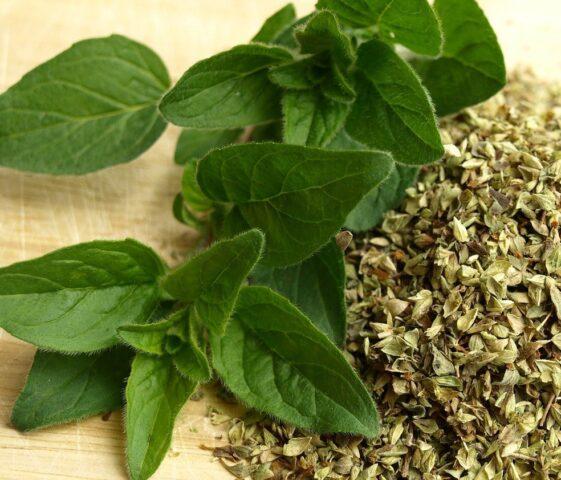Content
Marjoram and oregano are different plants, although they belong to the same genus and family. This provides them with many similarities. Both plants are used as seasonings. They differ in appearance, taste and aroma, application features, and some properties.
Is marjoram oregano or not?
Marjoram is one of the species of the Oregano genus. There are about 55 of them. They include Oregano, often called Oregano.

Oregano in Russia is also called oregano, ladanka, matryoshka, mother, matserdushka, zenovka
What is the difference between marjoram and oregano (oregano)
The Latin name of the genus is Origanum. It is because of this that the popular seasoning began to be called oregano. In practice, only oregano is usually called this way, less often Cretan and Syrian (the main component of the spicy mixture za'atar).
Places of growth
Marjoram differs from oregano in several ways. One of them is the place of growth. Oregano can be found in nature in the following regions:
- Europe;
- Mediterranean;
- Russia (exception – the Far North);
- USA, France - the plant is cultivated.
Marjoram is more thermophilic. Because of this feature, its distribution area is different:
- Central Europe;
- Near East;
- North Africa.
The thermophilic nature of the perennial is reflected in the characteristics of its cultivation. Frosts are destructive for him. A decrease in temperature is fraught with growth stagnation and development inhibition.
Appearance
It is difficult to see the difference between seasonings in dried and crushed form, but the plants themselves have it. Common oregano grows up to 0.5-0.7 m, when its relative is half as tall. It has a woody stem. It branches all over, when oregano has only the upper part.
Another difference is the leaves of the plants. This is easier to notice with fresh or whole seasonings. The similarity is in the oblong-ovate shape, but the leaves of Oregano vulgare are pointed at the tops, while those of its relative are blunt. Another difference in appearance is that oregano has leaves that are grayish-green below and dark green above, while the other perennial is gray in color and has felt-like pubescence.
Another biological difference is flowering. For oregano it occurs in June-July, for its relative it occurs a month later. Oregano has corymbose-paniculate inflorescences, while another perennial has tomentose-shaggy inflorescences. The difference lies in the color of the petals. In oregano they are light pink and purple, while in its relative they are white, pink or red.
Aroma and taste
Marjoram has a pleasantly spicy aroma with camphor notes, reminiscent of cardamom, but more subtle and sweet. The seasoning has a spicy-hot taste.
A related seasoning has a bitter-spicy aroma. Its taste is rich and tart. Unlike other seasoning, it is more subtle. Light astringent notes can be traced.

Marjoram leaves and flower buds are used in cooking - fresh, dried, roasted.
Application
Oregano is widely used in cooking.In Belarusian and Caucasian cuisine, seasoning is added when pickling mushrooms and cucumbers. Italians like to flavor their pizza with it. Oregano is also added to other dishes:
- meat – fried, stewed, baked;
- pates;
- homemade sausages;
- meat and liver fillings;
- sauces;
- gravy.
Marjoram has a different area of application. It is mainly added to the following dishes:
- fish;
- vegetable;
- conservation;
- salads;
- soups;
- sausages;
- pepper mixtures;
- puddings;
- liqueurs;
- liqueurs.
Unlike its related herb, oregano is used to brew tea. This scope of application is typical for Russia. Marjoram is also added to tea, but unlike oregano, only for flavoring, and not as a base. Similarly, it is used in the production of vinegar.
Benefits and harms
Both plants are endowed with healing properties. Oregano provides the following effects:
- anti-inflammatory;
- expectorant;
- diuretic;
- antiseptic;
- diaphoretic.
The plant is even used in traditional medicine. The herb extract is included in the herbal medicine Urolesan.
There are differences in beneficial properties between related plants. Marjoram is endowed with the following qualities:
- diuretic effect;
- sedative effect;
- improved digestion;
- wound healing;
- toning.
The plant has a positive effect on digestion, stimulating it and relieving flatulence. In contrast, oregano is not recommended for use for stomach disorders, since it can only aggravate them. The plant also has other contraindications:
- preoperative period due to increased risk of bleeding;
- bleeding disorders;
- pregnancy;
- breast-feeding.
Marjoram is also not recommended for pregnant women. Unlike its relative, it does not have a sedative effect, and if abused, it can only increase bad mood and depression. There are other contraindications:
- increased blood clotting;
- children under five years of age;
- thrombosis;
- low pressure.

In cooking, it is recommended to add oregano shortly before the dish is ready, and a related seasoning, in contrast, is recommended to be added just before serving.
Similarities between oregano and marjoram
Both plants are herbaceous perennials. They belong to the same genus, the Lamiaceae family.
Both plants are good honey plants and are used in cooking and folk medicine. They are used as a seasoning both fresh and dried. Both spices are popular in Europe and the USA.
Conclusion
Marjoram and oregano are quite popular herbs, but they are not the same thing. They are united by belonging to the same genus and similar areas of application. These seasonings have many differences, including taste, aroma, and the appearance of the plants.








